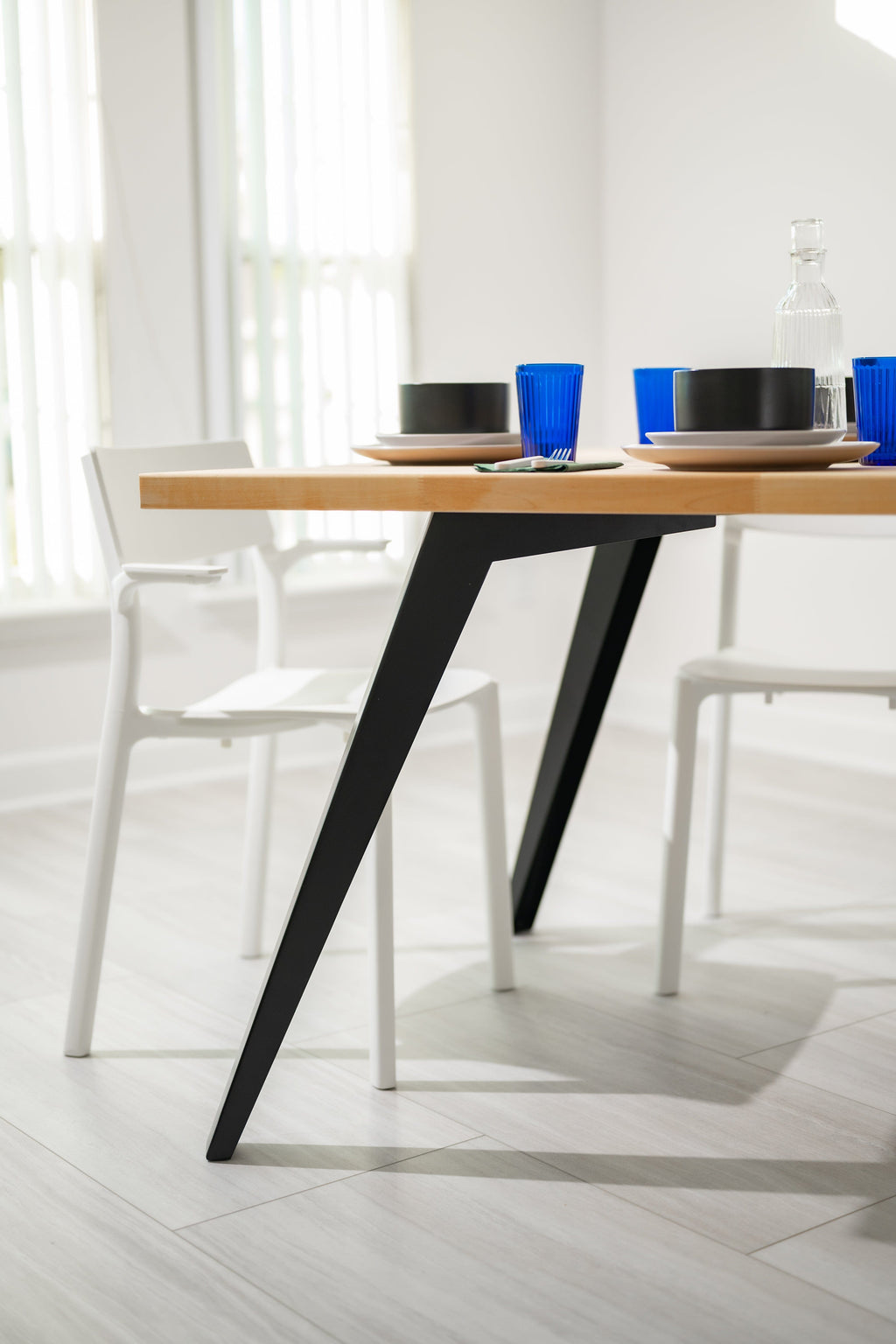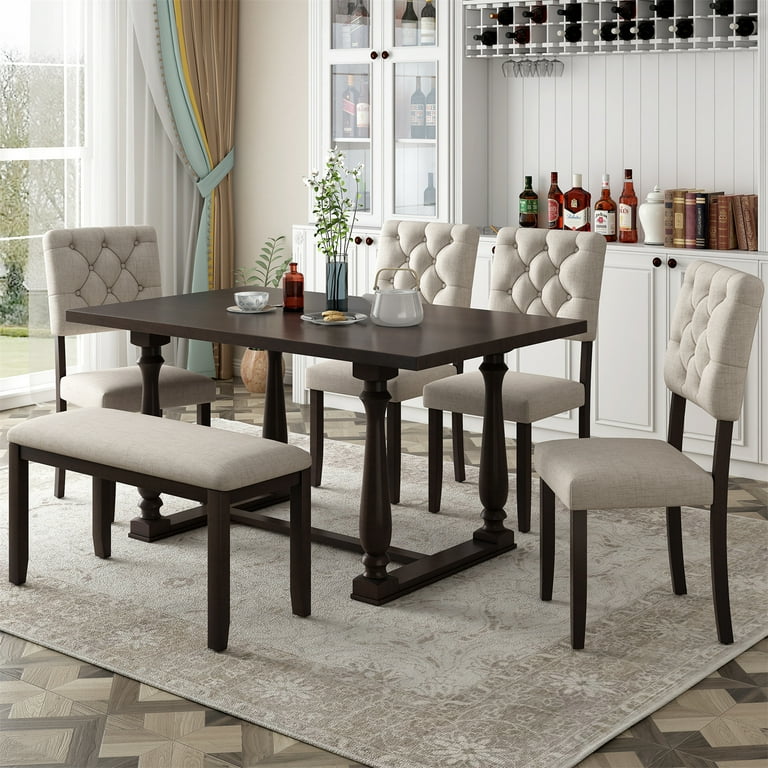The Best Materials for Durable and Elegant Dining Room Table Legs
The Best Materials for Durable and Elegant Dining Room Table Legs
Blog Article
From Conventional to Modern: Locate the Ideal Eating Space Table Legs for Your Design
While classic designs such as cabriole and transformed legs evoke a feeling of ageless elegance, modern designs like hairpin and geometric options present an opportunity for striking aesthetic rate of interest. As you think about these elements, the inquiry remains: how can you effortlessly incorporate these diverse leg designs to create a harmonious dining experience?
Recognizing Table Leg Styles
The selection of dining space table leg styles can considerably influence both the appearances and performance of the room. Each leg style contributes one-of-a-kind functional features and visual components, providing to varied layout choices and usage needs. Understanding these styles is important for choosing the best table that lines up with your general interior style vision.
For example, tapered legs supply a tidy, classic look that can boost an area's style, while stand bases give security and maximize legroom, making them perfect for smaller rooms. Barrette legs, a hallmark of mid-century modern-day design, present a commercial style, enabling a ventilated, open feeling. Similarly, trestle legs stimulate rustic beauty, supplying durable support and a sense of timelessness.
Additionally, the selection of materials plays a considerable role. Wooden legs can bring warmth and appearance, whereas steel choices usually communicate a sleek, contemporary ambiance. Eventually, recognizing table leg designs is necessary for producing a cohesive dining area that mirrors individual design while making sure practicality and convenience. By attentively thinking about these elements, you can improve both the visual and functional allure of your dining space.
Traditional Table Leg Options
When selecting eating space table legs, traditional alternatives usually symbolize timeless style and craftsmanship. These layouts show a rich heritage and a dedication to quality, making them ideal for those who value timeless aesthetic appeals.
One of the most renowned conventional leg designs is the cabriole leg, identified by its graceful rounded form. This layout often features ornamental makings and is most generally located in Queen Anne and Chippendale furniture. Another preferred alternative is the transformed leg, which flaunts a series of smooth, rounded forms that offer a timeless appearance while maintaining stability.
Furthermore, the straight leg, while basic, supplies a unadorned and tough structure that can blend perfectly with a variety of tabletop designs. For those drawn to ornate describing, claw-and-ball feet legs stimulate a sense of splendour and can function as a magnificent centerpiece in any kind of dining space.
Finally, pedestal bases, although not purely legs, supply an alternate typical option that permits adequate legroom and can be magnificently carved. Each of these conventional leg designs adds to the total atmosphere of a dining-room, marrying feature with aesthetic charm.

Modern Table Leg Layouts
Modern table leg layouts supply a diverse variety of designs that emphasize clean lines and innovative products. These styles commonly prioritize capability while acting as striking prime focus within an eating area. Minimal looks prevail, with legs crafted from materials such as steel, glass, and crafted wood, which add to a contemporary and airy feel.
One preferred design is the barrette leg, identified by its slim, conical framework that gives security without overwhelming the tabletop (dining room table legs). This design is typically located in mid-century contemporary furnishings and can easily enhance various table shapes. One more pattern is the usage of geometric shapes, where legs may handle asymmetrical or angular kinds, including visual interest and a touch of artistry

Blending Designs for One-of-a-kind Spaces
Typically, home owners look for to create special eating spaces that mirror their individual design by blending different style elements. This method permits the consolidation of varied aesthetic appeals, resulting in an unified yet distinct environment. As an example, coupling a rustic wood table with smooth, modern-day steel legs can produce a distinctive contrast that elevates the room's general appeal.
In addition, integrating vintage table legs with contemporary table tops can evoke a sense of background while keeping a contemporary sensibility. Such mixes not only display individual preference yet additionally urge creativity, enabling property owners to curate a space that really feels both personal and inviting.
Color plays an essential function in this mixing process; selecting table legs that enhance or contrast with the existing color pattern can improve visual interest. Whitewashed legs can soften the boldness of a dark table surface area, producing a balanced visual.
Tips for Choosing the Right Legs
Picking the right table legs is crucial for achieving both functionality and visual allure in your dining area. Begin by considering the overall style of your space. Typical settings gain from legs that feature elaborate carvings or turned designs, while contemporary rooms may call for sleek, minimal designs.
Following, examine the elevation and security of this the legs. dining room table legs. Typical dining tables range in between 28 to 30 inches in height, so ensure the legs match this measurement for comfort. In addition, robust materials, such as hardwood or metal, can improve security and long life
Review the leg form also-- choices include right, tapered, or stand layouts. Straight legs supply a traditional appearance, while conical legs can add a touch of sophistication. Pedestal bases supply enough legroom and are excellent for smaller sized rooms.
Final Thought
In summary, choosing the perfect dining-room table legs calls for cautious factor to consider of both modern-day and traditional designs. Traditional alternatives such as cabriole and transformed legs use timeless beauty, while modern-day designs like barrette and geometric forms supply a contemporary touch. By integrating leg design, elevation, and material with the general design, a cohesive and inviting ambience can be accomplished. Ultimately, the picked table legs ought to reflect the preferred aesthetic, boosting the eating experience within the space.
The variety of dining area table leg styles can dramatically influence both the aesthetic appeals and performance of the room. Inevitably, understanding table leg designs is crucial for developing a cohesive eating location that reflects individual style while making sure practicality and comfort.One of the most famous traditional leg designs is the cabriole leg, characterized by see this its graceful curved form. Straight legs supply a timeless appearance, while conical legs can add a touch of sophistication.In recap, picking the perfect eating space table legs requires cautious consideration of both modern and conventional styles.
Report this page